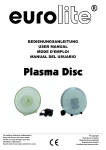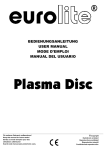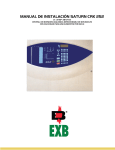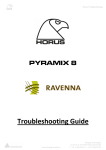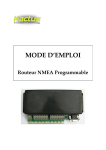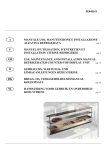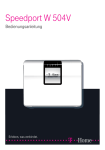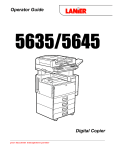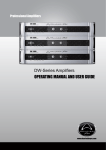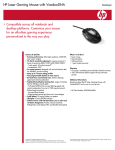Download Logic Depth - VDO Marine
Transcript
depti.qxd 10.11.99 10:45 Seite 1 Montage- und Bedienungsanleitung Installation and Operating Instructions VDO Kienzle Vertrieb und Service GmbH ...ein Mannesmann-Unternehmen depth_e.qxd 22.05.1998 14:07 Seite 43 Installation and Operating Instructions Page 44 - 84 43 depth_e.qxd 22.05.1998 14:07 Seite 44 CONTENTS CONTENTS Preface . . . . . . . . . . . . . . . . . . . . . . . . . . . . . . . . . . . . . . . . . . 46 Safety Instructions . . . . . . . . . . . . . . . . . . . . . . . . . . . . . . . . 47 Installation . . . . . . . . . . . . . . . . . . . . . . . . . . . . . . . . . . . 47 Maintenance. . . . . . . . . . . . . . . . . . . . . . . . . . . . . . . . . . 48 The VDO LOGIC DEPTH . . . . . . . . . . . . . . . . . . . . . . . . . . . . 49 System components . . . . . . . . . . . . . . . . . . . . . . . . . . . . . . . . 50 Accessories . . . . . . . . . . . . . . . . . . . . . . . . . . . . . . . . . . . . . . . 50 The functions of the VDO LOGIC DEPTH . . . . . . . . . . . . . . 51 Indications and Settings . . . . . . . . . . . . . . . . . . . . . . . . . . . . . 51 Control keys. . . . . . . . . . . . . . . . . . . . . . . . . . . . . . . . . . . . . . . 52 Basic Settings . . . . . . . . . . . . . . . . . . . . . . . . . . . . . . . . . . . . 53 Senstitivity adjustment . . . . . . . . . . . . . . . . . . . (Sens). . . . . . 54 Display unit selection . . . . . . . . . . . . . . . . . . . . (Unit). . . . . . . 55 Tide amplitude correction . . . . . . . . . . . . . . . . . (Tide). . . . . . . 56 Shallow alarm setting . . . . . . . . . . . . . . . . . . . . . (sAlarm). . . . 57 Keel depth setting . . . . . . . . . . . . . . . . . . . . . . (Keel). . . . . . . 58 Draught settings . . . . . . . . . . . . . . . . . . . . . . . . (Draught). . . . 59 Draught settings . . . . . . . . . . . . . . . . . . . . . . . . . . . . . . . . . . 60 Water depth indication. . . . . . . . . . . . . . . . . . . . (Depth). . . . . 61 Navigation alarms . . . . . . . . . . . . . . . . . . . . . . . . . . . . . . . . . . 63 Setting and activation of shallow water alarm . . . . . . . . . . . . . . . (↑Alarm). . . 63 of deep water alarm . . . . . . . . . . . . . . . . . . (↓Alarm). . . 65 Anchor watch activation . . . . . . . . . . . . . . . . . . . (↓ Alarm). . . 67 Trouble shooting . . . . . . . . . . . . . . . . . . . . . . . . . . . . . . . . . . 69 The NMEA interface. . . . . . . . . . . . . . . . . . . . . . . . . . . . . . . . 71 NMEA data format . . . . . . . . . . . . . . . . . . . . . . . . . . . . . . . . . . 72 The Maintenance of the VDO LOGIC DEPTH . . . . . . . . . . . 72 44 depth_e.qxd 22.05.1998 14:07 Seite 45 CONTENTS Installation of the VDO LOGIC DEPTH System. . . . . . . . . . 73 Installation of the indicating unit . . . . . . . . . . . . . . . . . . . . . . . 73 Installation of the echo sounder . . . . . . . . . . . . . . . . . . . . . . . 74 Internal installation . . . . . . . . . . . . . . . . . . . . . . . . . . . . . 76 Installation through hull . . . . . . . . . . . . . . . . . . . . . . . . . 78 The Electrical installation . . . . . . . . . . . . . . . . . . . . . . . . . . . 80 Electrical power supply . . . . . . . . . . . . . . . . . . . . . . . . . . . . . . 80 Repaeter Connection. . . . . . . . . . . . . . . . . . . . . . . . . . . . . . . . 81 NMEA Connection . . . . . . . . . . . . . . . . . . . . . . . . . . . . . . . . . 82 Legend of Connection Diagram. . . . . . . . . . . . . . . . . . . . . . . . 83 Cable Lengths . . . . . . . . . . . . . . . . . . . . . . . . . . . . . . . . . . . . . 83 Technical Data . . . . . . . . . . . . . . . . . . . . . . . . . . . . . . . . . . . . 84 45 depth_e.qxd 22.05.1998 14:07 Seite 46 PREFACE Dokument gehört immer an Bord! Manual should always be kept on board! Preface With the purchase of a component from the VDO LOGIC system you selected a high-quality product, made to the accepted State of the Art. Advanced production methods and the respect of the applicable quality assurance standards guarantee that our products are shipped in excellent condition. Thank you for your sound decision. We are certain that this system will provide you with valuable assistance and safety at sea. You should be familiar with all functions of the system to guarantee easy and safe use of your VDO LOGIC DEPTH. Please take the time to completely study this manual. Your VDO Kienzle agent will be pleased to help you if, thereafter, you still have questions or problems. Yours sincerely VDO Kienzle Vertrieb und Service GmbH © Copyright by VDO Kienzle Vertrieb und Service GmbH 1997 All rights reserved. 46 depth_e.qxd 22.05.1998 14:07 Seite 47 SAFETY Safety Instructions Please respect all instructions of this manual . All texts marked with this symbol should have your particular attention. They are indications of particular importance for the operation of the system and for your safety. The use of the echo sounder system does not relieve you of your responsibility for your ship, which requires good seamanship. Always use your personal experience when interpreting the displayed values. Safety Instructions concerning the installation The echo sounder sould be installed by your shipyard or by an aproved specialist. Use adequate working clothes when you install the system. Avoid clothing which may be caught by moving parts. Use a hair net if you have long hair. Remove all metallic or electrically conducting jewellery, such as chains, bracelets, rings, etc. when working on the on-board electronics. Disconnect the minus polarity at the battery before starting your work to prevent the risk of a short-circuit. Short-circuits can cause cable harness fires, battery explosions and damages of electronic memory systems. Please note that when you disconnect the battery, all volatile electronic memories will lose their contents, and will have to be re-programmed. Run the engine compartment blower for a certain time before starting work in a gasoline engine compartment. Check that there is enough room behind the installation opening. Predrill the opening and complete with keyhole saw (respect the safety instructions of the hand tool manufacturer). When selecting the location of the sounder check that no stringers will be damaged. Also check for furniture, floor boards, cables, etc. 47 depth_e.qxd 22.05.1998 14:07 Seite 48 SAFETY Solvent vapours can be produced by the sounding head sealant. Provide sufficient ventilation. Only use insulated tools if you must work without disabling the power supply. The electrical outputs of the echosounder indicating instrument and the cables connected to them must be protected against direct contact or damage. This means that the cables must have a sufficient insulation resistance or voltage rating, and that the contact points cannot be touched. Electrically conducting parts of the connected loads must also be protected by adequate measures against a direct contact. The use of non-insulated wires and contacts is strictly forbidden. Safety Instructions concerning the maintenance Repairs of echosounder system components can only be made by specialists authorized by VDO Kienzle. The VDO LOGIC echosounder system fullfills the applicable safety regulations. Note: Capacitors in the unit can retain their charge, even if the unit is separated from its power supply. Check that replacement fuses are of the indicated type and current rating. The use of temporarily repaired fuses or jumpering the fuse holder is strictly forbidden. 48 depth_e.qxd 22.05.1998 14:07 Seite 49 VDO LOGIC DEPTH The VDO LOGIC DEPTH The VDO LOGIC DEPTH is a modern depth measuring system designed for use in Boats. When in operation, the system displays the water depth below the keel in meters and in feet. The dial is subdivided in three ranges with differring graduation steps. 0 - 1 m below keel in steps of 10 cm 1 - 10 m below keel in steps of 1 m 10 - 100 m below keel in steps of 10 m Other values or help texts are displayed by an LC display beneath the dial. The unit has six large keys on the unit front, logically allocated to the functions. This means that the unit is uncomplicated and easy to use. Alarms are given optically by the LC display, and acoustically by an integrated warning siren. This unit can be connected to other installed VDO LOGIC units (e.g. LOGIC MULTIFUNCTION) by the VDO LOGIC bus, and data can be transferred. The main display unit has a NMEA 0183 output for data transfer to the VDO LOGIC MAP, to a PC or to a radar unit. A maximum of two additional daughter displays can be connected. 49 depth_e.qxd 22.05.1998 14:07 Seite 50 VDO LOGIC DEPTH System components or The unit consists of: - - Display unit with protective cover Drilling template for indicating instrument installation Neoprene pad for indicating instrument Mounting parts kit for indicating instrument Echosounder with connecting cable, length 9 m, and connector (for internal installation or for installation through the hull, depending on the type) Hull sleeve with sealing washers, fixing nut, retainer pin and retainer rings Blind plug with control cable (only for echosounder installed through the hull) Connecting cable from display unit to another display unit (11 wires, 0.4 m) Product certificate Installation and operating instructions Accesories (not included) - 50 Repeator LOGIC DEPTH, N01 410 502 cable indicator – repeator (6-wires) sold by the meter X10.719/002/001 cable indicator – indicator (11-wires) sold by the meter X10.719/002/002 depth_e.qxd 22.05.1998 14:07 Seite 51 FUNCTIONS The functions of the VDO LOGIC DEPTH Indications - Display of depth under keel Navigation depth under water surface Shallow alarm Navigation alarm shallow water Navigation alarm deep water (indication by pointer) (indication by LC display) (indication by LC display) (indication by LC display) (indication by LC display) Settings - Sensitivity selection, four degrees Display unit selection, meter or feet Activation of anchor watch in tide waters Fixed setting of water depth for shallow alarm Distance between echo sounder and ship bottom (keel depth) Distance ship bottom to water surface (draught) Water depth for navigation alarms 51 depth_e.qxd 22.05.1998 14:07 Seite 52 FUNCTIONS Control keys The “CLEAR” key Use this key when programming the unit to reset values to zero. The navigation alarms can be activated or deactivated. The “UP ARROW” key This key increases set values. One push will change the valve in increments of 0.1 or 1.0. The value will continuously increase if the key is held down. The “DOWN ARROW” key This key decreases set values. One push will change the value in increments of 0.1 or 1.0. The value will continuously decrease if the key is held down. The “PROG” key This key selects values for programming. The “MODE” key This key selects values for programming. The “ENTER” key This key terminates all programming functions and the selection of the values which will be displayed. 52 depth_e.qxd 22.05.1998 14:07 Seite 53 BASIC SETTINGS Basic Settings The basic settings needed for a perfect operation are selected by pressing the "PROG" key once or several times. Sens ? Sensitivitiy adjustment (see page 54) Unit ? Display unit selection (see page 55) Tide ? Tide amplitude adjustment (see page 56) sAlarm ? Shallow alarm setting (see page 57) Keel ? Keel depth setting Draught ? Draught settings Exit ? (see page 58) (see page 59) Exit programming menu 53 depth_e.qxd 22.05.1998 14:07 Seite 54 BASIC SETTINGS Sensitivity adjustment (Sens) The sensitivity of the display can be set to one of four degrees, depending on the conditions (rock, silt) and the water type (fresh water, brackish water, salt water). The sensitivity is set as follows: Example: or: This example changes the sensitivity from "extreme" to "low". 54 depth_e.qxd 22.05.1998 14:07 Seite 55 BASIC SETTINGS Display unit selection (Unit) The displayed value indication can use the units "meter" or "feet". Select the unit as follows: oder This example changes the unit from "meter" to "feet". 55 depth_e.qxd 22.05.1998 14:07 Seite 56 BASIC SETTINGS Tide amplitude correction (Tide) In tide waters (low/high tide) this function is needed for the anchor watch. With the functions "Tide On" and anchor watch activated the water depth is measured every 5 minutes approximately. The anchor alarm is activated if the water depth changes by more than 1.4 m during this time. A possibility exists that the anchor did not hold and that the ship is drifting off. A change of the water depth by more than 1.4 m will always activate the anchor alarm if "Tide Off" and anchor watch are activated. Make the setting as follows: Example: or This example activates the tide amplitude correction. 56 depth_e.qxd 22.05.1998 14:07 Seite 57 BASIC SETTINGS Shallow alarm setting (sAlarm) In the case of uncertain water depths or in unknown waters the shallow alarm will warn if a shallow approaches, and will prevent damages to the ship. The shallow alarm can be set in steps of 0.1 m in the range from 0 to 45 m. The set value is the distance between the lowest part of the ship and the bottom. The alarm starts as soon as the distance is smaller than the set alarm threshold. A flashing warning triangle is displayed in the LC display, and the acoustical warning is sounded. The acoustical warning can be muted by pressing the "ENTER" key. The optical alarm remains enabled until the set alarm threshold is exceeded by about 0.5 m. Both alarms are automatically switched off if the set alarm threshold is exceeded by about 0.5 m. Set the shallow alarm as follows: Example: 3x This example changes the shallow alarm threshold from 3.1 m to 0.3 m. 57 depth_e.qxd 22.05.1998 14:07 Seite 58 BASIC SETTINGS Keel depth setting (Keel) The analog display should indicate the distance between your ship and the bottom. To obtain this indication measure the distance between the echosounder and the lowest point of the ship, and enter this value in function "Keel". For a sailboat this will be the distance of the echo sounder to the keel bottom, for a motor-boat the distance of the echo sounder to the bottom of the screw diameter. Keel The setting can be made in steps of 0.1 m between 0 and 15 m. Set the keel depth as follows: Example: or : 8x 12 x This example changes the keel depth from 0.2 m to 1.2 m. 58 depth_e.qxd 22.05.1998 14:07 Seite 59 BASIC SETTINGS Draught settings (Draught) Function "Depth" displays the depth below the water surface on the LC display (see page 61). The draught of the ship must be known for a correct indication of this value. Draught Measure the distance bewteen the lowest point of the ship and the water line, and program this value for function "Draught" as follows. The value can be set in steps of 0.1 m between the keel depth previously set (Keel) and 15 m. Example: 2x This example changes the draught from 1.2 m to 1.4 m. 59 depth_e.qxd 22.05.1998 14:07 Seite 60 MAIN FUNCTIONS Main Functions The main functions of the VDO LOGIC DEPTH are accessed with the "MODE" key. They are selected by pressing the "MODE" key several times. Depth ? Water depth indication ↑Alarm ? Shallow water alarm setting/activation (see page 63) (see page 61) ↓ Alarm ? Deep water alarm setting/activation (see page 65) ↓ Alarm 60 Anchor watch activation (see page 67) depth_e.qxd 22.05.1998 14:07 Seite 61 MAIN FUNCTIONS Water depth indication (Depth) The standard indication of the VDO LOGIC DEPTH LC display is the water depth. The water depth is displayed each time a programming cycle is terminated, or when the "ENTER" key is pressed. Example A: In this example A the current water depth is 5.9 m. No alarm has been given. The display can also show alarm symbols if alarms have been activated. Example B: In this example B the shallow alarm (s Alarm, see page 57) has been activated, as the depth attains the alarm threshold value or is even lower. The display shows the flashing alarm symbol and the current water depth. Example C: In this example C the anchor alarm (↓ Alarm, see page 67) has been activated as the active anchor watch detected a change of the water depth of more than 1.4 m. The display shows the flashing alarm symbol and the current water depth. 61 depth_e.qxd 22.05.1998 14:07 Seite 62 MAIN FUNCTIONS Example D: In this example D the shallow water alarm (↑ Alarm, see page 63) has been activated, as the depth attains or is less than the set alarm depth. The display shows the flashing alarm symbol and the current water depth. Example E: In this example E the deep water alarm (↓ Alarm, see page 65) has been activated, as the depth attains or exceeds the set alarm depth. The display shows the flashing alarm symbol and the current water depth. Example F: In this example F the reception or the evaluation of the echo is not possible (see page 69). The display shows four bars, and the pointer of the analog display returns to zero position. 62 depth_e.qxd 22.05.1998 14:07 Seite 63 MAIN FUNCTIONS Navigation alarms Two independent navigation alarms (shallow and deep water) are available on the VDO LOGIC DEPTH unit. They can be used as navigation aids, for instance when tacking on the course should cross different depth lines. Alarm depths between 1 m and 150 m can be set in steps of 1 m. Setting and activation of shallow water alarm (↑Alarm) Set and activate the shallow water alarm as follows: Example: 7x In this example the shallow water alarm threshold is changed from 0.0 m to 7.0 m. Hit the "CLEAR" key to activate the alarm threshold. 63 depth_e.qxd 22.05.1998 14:07 Seite 64 MAIN FUNCTIONS The set alarm is optically and acoustically activated when the set alarm threshold is attained or the depth is less than that value. Example: In this example the alarm is activated if the depth is less than the alarm threshold of 7 m. The current water depth is 4.0 m. The acoustical alarm can be muted with the "ENTER" key. The flashing alarm signal remains on until the depth exceeds the alarm threshold by 1 m. The alarms are automatically switched off when the depth exceeds the alarm threshold by 1 m. Proceed as follows to deactivate the shallow water alarm: Example: In this example the shallow water alarm is deactivated. The set alarm threshold of 7 m is stored by the unit. 64 depth_e.qxd 22.05.1998 14:07 Seite 65 MAIN FUNCTIONS Setting and activation of deep water alarm (↓ Alarm) Set and activate the deep water alarm as follows: Example hold down until: In this example the deep water alarm threshold is changed from 0 m to 500 m. Hit the "CLEAR" key to activate the alarm threshold. The set alarm is optically and acoustically activated when the set alarm threshold is attained or the depth is greater than that value. Example: In analogy to the shallow water alarm the alarm of this example is activated if the depth exceeds the alarm threshold of 50 m. The current water depth is 55 m. The acoustical alarm can be muted with the "ENTER" key. The flashing alarm signal remains on until the depth is below the 65 depth_e.qxd 22.05.1998 14:08 Seite 66 MAIN FUNCTIONS alarm threshold by 1 m approximately. The alarms are automatically switched off when the depth exceeds the alarm threshold by 1 m. Proceed as follows to deactivate the deep water alarm: Example: In this example the deep water alarm is deactivated. The set alarm threshold of 50 m is stored by the unit. 66 depth_e.qxd 22.05.1998 14:08 Seite 67 MAIN FUNCTIONS Anchor watch activation (↓ ↓ Alarm) This function monitors and signals if an anchor is holding the ship, or if the ship is drifting off to shallower or deeper water. The VDO LOGIC DEPTH monitors the current water depth if anchor watch is activated. The alarm is triggered when the water depth changes by more than 1.4 m. Also activate the tide amplitude correction (see page 56) if you anchor in tide waters. In this case the current depth is checked every 5 minutes, and the stored value is corrected. This prevents false alarms in tide waters. Activate the anchor watch as follows: Example: In this example the anchor watch is activated at a current water depth of 7.3 m. The alarm is accordingly triggered at depths of 5.8 m or 8.8 m. Example: The triggered alarm is signalled by the flashing alarm signal. It can be switched off with the "ENTER" key. 67 depth_e.qxd 22.05.1998 14:08 Seite 68 MAIN FUNCTIONS Thereafter you should check the anchor. Deactivate the anchor watch as follows: Example: 68 - Check display unit (Unit) selection - Check keel depth (Keel) and draught (Draught) settings - LC display shows bars only (----) or Pointer is on zero - No bottom echo is received, it is not correctly evaluated (see page 70). - Install sender cable as far from engine ignition system and cables of strong electric motors as possible - Check sender installation instructions and apply them correctly. - Change echo sounder sensitivity (Sens) Seite 69 - Wrong indication 22.05.1998 14:08 - Check connections of LOGIC data bus per wiring schematic TROUBLE SHOOTING - LC display indicates “Missing” depth_e.qxd Correction - Check electrical connections per wiring schematic - Check on-board voltage, supply voltage is 10.8 to 15 V DC Trouble Shooting Error - No function of VDO LOGIC DEPTH 69 depth_e.qxd 22.05.1998 14:08 Seite 70 TROUBLE SHOOTING Other causes may be the reason for a bottom echo not being correctly received or evaluated: - The maximum measuring depth of 150 meter has been exceeded; - The bottom has very strong and dense growth (seaweed); - The bottom is covered by a thick layer of mud; - Water layers of different salinity or different temperature, for instance at estuaries or sewage treatment plants; - Fish or school of fish; - Preceding vessels or backing manoeuvers aerated the water; - Strong electromagnetic disturbances, such as refrigerators, motors, radio equipment; - Vessels close to each other also operating their echosounders; - The speed of the ship (plaining) can affect the measurement. These examples show that it is not possible to correct all problems by optimum installation and sensitivity selection. 70 depth_e.qxd 22.05.1998 14:08 Seite 71 NMEA-INTERFACE The NMEA interface The NMEA (National Marine Electronics Association) is an organization of manufacturers, with the objective of developing standards for data transmission between units of different makes. The VDO LOGIC DEPTH sends the following data sets corresponding to the NMEA standard 0183: - $IIDBT: Depth below sender - $IIDPT: Depth below sender and sender - water surface distance The NMEA interface mostly corresponds to the serial interface RS422. In most cases the NMEA interface can be connected directly to the interface RS232 of the PC. Connect the PC as follows to read NMEA data: LOGIC indicating instrument: Terminal 9 (GND) Terminal 20 (NMEA A out) 9-pin PC connector: pin 5 pin 2 25-pin PC connector: pin 7 pin 3 If this connection does not work, the PC has to be equipped with an interface RS422 to RS232. Connect the PC as follows: LOGIC indicating instrument: Terminal 19 (NMEA B out) Terminal 20 (NMEA A out) PC interface RS422 to RS 232 IN B (Return) IN A (Signal) The NMEA data sets can be read under Windowws 3.xx with the terminal program (accessories group), or under Windos 95 with the hyperterminal. Use the following settings in the data transfer menu: Transfer rate Data bits Stop bits Parity Protocol 4800 Baud 8 1 none none 71 depth_e.qxd 22.05.1998 14:08 Seite 72 DATA FORMAT/ MAINTENANCE The NMEA data format Examle: DBT= Depth Below Transducer $IIDBT,14,f,4.4,m,2.4,F $IIDBT,a, f, b, m, c ,F a f b m c F depth below transducer (14 feet) feet depth below transducer (4.4 m) Meter depth below transducer (2.4 Fathoms) Fathoms DPT: Depth $IIDPT,4.4,+0.5 $IIDPT,a ,b a b depth below transducer (4.4 m) positive: distance transducer – water surface (0.5 m) negative: distance transducer – Keel The maintenance of the VDO LOGIC DEPTH The display head is maintenance-free. To clean it, use a moist lint-free or antistatic cloth. Do not use any cleaning agents. The O-rings of the transducer will have to be checked for wear, embrittlement and damage at regular intervals (twice per boating season). The slightest indication of any such shortcoming makes it necessary to replace both O-rings. Part No.: N05 801 418 O-Ring for Depth Transducer 72 depth_e.qxd 22.05.1998 14:08 Seite 73 INSTALLATION Installation of the VDO LOGIC DEPTH System Please read the safety instructions on pages 47 and 48 before you start the installation. Installation of the indicating unit - Stick the supplied drilling template to the desired location. - Drill the indicated holes. - Slowly pull off the template. - Carefully clean the surroundings before inserting the indicating instrument. Remove all chips. - Place the supplied neoprene mat behind the indicator. - Connect the instrument per wiring diagram (see "Electrical installation"), then insert the instrument. - Fix the instrument by tightening the knurled nuts. The knurled nuts should only be tightened hand-tight. 73 depth_e.qxd 22.05.1998 14:08 Seite 74 INSTALLATION The drilling template has been designed to correctly space the instruments, if other VDO instruments are also installed, and to permit the installation of the white protection cover. Installation of the echo sounder The sounder must be installed in the hull at a turbulence-free location. If possible, it should be installed vertically. Avoid locations close to external valves, anodes, log senders, etc. to prevent mutual influences by turbulence. Measure and write down the distance between echo sounder and keel bottom, and the draught of the ship. These data will be needed later for the basic settings. Never combine the sender cable with other cables to a cable harness. Ignition pulses and other disturbances could impair the echosounder function. Install echosounder sender cable separately. Do not shorten the sender cable. If necessary, an extension using a shielded, flexible coaxial cable with silver-coated conductor can be used to increase the length to 20 m. 74 depth_e.qxd 22.05.1998 14:08 Seite 75 INSTALLATION On sailboats the sender should always be installed ahead of the keel, as close to the longitudinal ship axis as possible. In the case of a long keel the sender location should be in the first third of the hull, but not close to the maximum keel thickness. Especially on sailboats it is important to install the sender vertically, otherwise - due to additional list - a depth measurement may become impossible. Installation on sailboats Echo sounder sender On motor boats the recommended installation is at about two thirds of the hull length, never at the stern, in the zone of strong turbulence, or near the bow, where disturbances due to strong air suction is to be expected. An ideal location is near the longitudinal ship axis in the area of the fiorst stringer, if possible directly ahead of the engine compartment, This is the only location where the echosounder can function without disturbances, even at high speeds. The deviation from vertical installation should not exceed 10 degrees, but at high speed, tight turns and deep water this may cause failures of the measurement. Installation on motor boats 1st stringer echosounder sender 75 depth_e.qxd 22.05.1998 14:08 Seite 76 INSTALLATION Internal echosounder installation An internal installation of the sender is only possible on ships with fiberglass reinforced hulls. Due to signal dampening this type of installation may cause power losses and is prone to more disturbances. Check that the location of the installation has no air inclusions in the laminate, and that the hull material thickness is not excessive (12 mm max.) The ship must be in the water when the optimum installation location is selected. Proceed as follows in your search: Supply the indicating instrument with power per wiring diagram (see page 80) and connect it to the sender. Move the sender in a plastic bag filled with water over the hull until you obtain a stable depth reading. Find the installation location Fiberglass The sender can be definitely fixed when you have found to optimum location. Install the sender by bonding it with a salt-water resistant sealant, or use an installation kit. Installation kits are availble in yachting accessories shops, shipyards, etc. 76 depth_e.qxd 22.05.1998 14:08 Seite 77 INSTALLATION Installation of sender: Fix with sealant: Avoid air inclusions between sender and hull. or: Fix with instllation kit: Adjust the tube to the hull angle and bond. Fill the tube with oil and check for leaks. Insert the sender and close the tube. The oil can be castor oil or Castrol MSSR, for instance. oil glue 77 depth_e.qxd 22.05.1998 14:08 Seite 78 INSTALLATION Installation of echosounder through the hull 53 mm dia. Hull sleeve installation 1. 2. Insert the hull sleeve from the outside and bond it with a salt-water resistant sealant. From the inside, first place the black gasket, than the white one on the sleeve, then screw the fixation nut. The fixing nut should first be tightened hand-tight. After curing of the sealant continue tightening the nut by hand (about 1/4 turn more) and check the installation for leaks. Sender installation: 78 36 mm max. Make a hole, 53 mm diameter, at the selected location. The hull thickness should not exceed 36 mm. Chamfer the hole outside edge with about 45 degrees for the sealant, and to obtain a reliable seal. Install the hull sleeve and the sender as follows: depth_e.qxd 22.05.1998 14:08 Seite 79 INSTALLATION 3. 4. 5. Insert the sender into the sleeve. The two holes in the upper sender section should correspond to the holes in teh sleeve. Secure the sender by inserting the retainer pin through the holes. Lock the retainer pin by installing the rings at both pin ends. Tie the control cable of the blind plug to one of the retainer pin rings. You will need the blind plug to remove the sender. In this case The blind plug must be secured in the same way as the sender. Please note that a considerable quantity of water can enter the ship when the sender is being removed. Never remove the sender when the ship is in the water. The sender can be covered with a thin coat of antifouling paint. This cover must be free of air inclusions, which would impair the echosounder function. 79 depth_e.qxd 22.05.1998 14:08 Seite 80 INSTALLATION Electrical Installation Electric power supply red blue pink brown Terminal 10 / red Terminal 9 / blue Terminal 8 / pink Terminal 7 / brown 80 = = = = +12 V GND +12 V Illumination GND Illumination depth_e.qxd 22.05.1998 14:08 Seite 81 INSTALLATION Repeater connection red blue pink brown black green Terminal 6 / black Terminal 5 / green = = Logic Bus 2 Logic Bus 1 81 depth_e.qxd 22.05.1998 14:08 Seite 82 INSTALLATION NMEA Connection grey white lilac yellow 82 input NMAE 0183 A in NMEA 0183 B in NMEA 0183 A out NMEA 0183 B out output = = = = other instrument Terminal 22 / grey Terminal 21 / white Terminal 20 / lilac Terminal 19 / yellow depth_e.qxd 22.05.1998 14:08 Seite 83 INSTALLATION Legend of Connection Diagram 1. Current Supply B1 Ship’s battery F1 5-amp fuse for instrument F2 5-amp fuse for internal lighting S1 On-off switch for navigation instruments S2 On-off switch for internal lighting A1 Indicator 2. Connection of Repeater A1 Main Instrument A2 Repeater Cable Lengths The permissible cable lengths for use with the LOGIC bus depend on the number of indicators and of the quality of cable in question. A standard installation with two steering positions usually comprises 12 indicators. The indicators at a steering position are linked with the cable supplied with the indicatos if their arrangement permits doing so. Up to a length of 8 meters (26 feet), unshielded cable may be used to bridge the distance between two steering positons. If a longer connecting cable is required, or if more than 12 indicators are to be connected, shielded cable will have to be used for each of the leads of the LOGIC Bus. In either case cable meeting the RG 58 standard will be a must. The shielding of the two cables will have to be connected at the main instrument side to terminal 9 of the indicator. If shielded cable is used for connection to the LOGIC bus, the cable run between the two steering postions must no exceed a maximum length of 16 meters (52 feet). The total number of indicators connected to the LOGIC bus must not exceed 15 in that case. 83 depth_e.qxd 22.05.1998 14:08 Seite 84 DATA Technical Data Measuring principle: Frequency: Supply voltage: Current consumption: Sending power: Range of application: Ultrasound propagation time 200 kHz 10.8 to 15 V DC about 80 mA, 120 mA with lighting about 40 W rms, about 320 W peak-peak 0.5 to 150 m depending on the nature of the surface and mounting. Operating temperature: -10 °C to +60 °C Type of protection: IP 65 at front per DIN 40050 EMC protection: CE: EN 50081-1, EN 50082-1 Data output: VDO LOGIC bus NMEA 0183 Output rate: about 1 value per second Dimensions: Indicating instrument: 125 x 125 x 23 mm Installation depth 37 m Installation diameter 85 mm Sender/hull sleeve Installation diameter 53 mm Max.hull thickness 39 mm for internal installation: Max.hull thickness 12 mm Dial graduation: Analog indication (depth under keel) 0 - 1 m in steps of 0.1 m 1 - 10 m in steps of 1 m 10 - 100 m in steps of 10 m Resolution: LC display (depth under water surface) 0 - 20 m in steps of 0.1 m 20 - 150 m in steps of 1.0 m Settings: Keel depth: 0 - 15 m in steps of 0.1 m Draught: 0 - 15 m in steps of 0.1 m Shallow alarm: - 15 m in steps of 0.1 m Anchor alarm Current depth + 1.4 m Tide correction if desired Navigation alarms: 0 - 150 m in steps of 1.0 m Technical modifications reserved 84 depti.qxd 10.11.99 10:45 Seite 2 VDO Kienzle Vertrieb und Service GmbH Kruppstr. 105 D-60388 Frankfurt am Main 08 600 842”a” Ausgabe/Edition: 07/97 Tel.: Fax: (069) 40805-0 (069) 40805-210












































